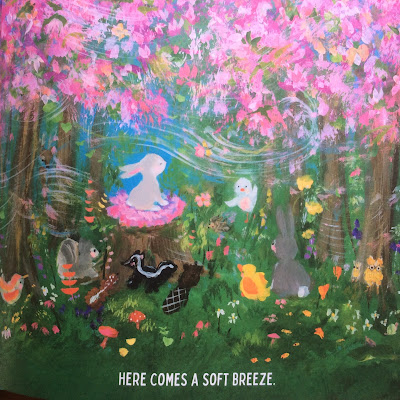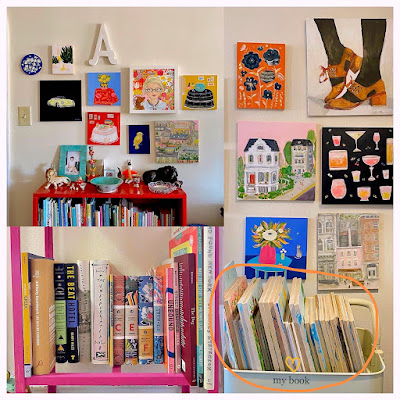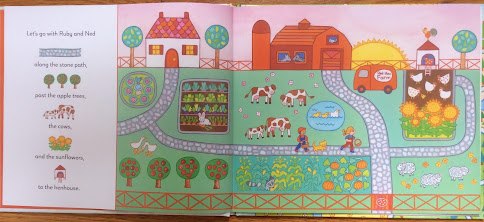Oscar is a playful and talented Havanese dog. He loves to make people smile by showing off his many tricks. When Oscar and I were given the chance to become a therapy dog team, we were so excited. After all, Oscar proved he would be a great therapy dog during his visits to my father when he was in the hospital. But on therapy dog test day, Oscar froze! You will need to read “Oscar’s Blue Bandana” to find out what happened next.
Oscar’s Blue Bandana was inspired by Oscar’s journey to become a therapy dog. Although the book is fiction, it is based on fact. I became inspired to write the book after realizing that once you tell a story over and over, it should be written down and shared widely.
This was a book that needed to be published! Why? How did you choose to self-publish?
My hope is that this book will encourage kids to follow their dreams, act from the heart and never give up. Dogs make great role models for children. They provide unconditional love, encourage goodness and never judge. The reader can’t help but fall in love with this adorable, fun, motivated dog destined to spread joy.
I chose to self-publish “Oscar’s Blue Bandana” for two main reasons. First, it was very important to me that I was able to write and illustrate the story. No one knows Oscar better than I do. I wanted to keep it true to him. Second, I wanted to control the timeline. My goal was to publish the story now while Oscar is fully engaged as a therapy dog.
What have been some of the pros and cons and advantages of self-publishing?
Self-publishing provides the author more control and autonomy over all the decisions relating to the book including, for example, illustrator, deadlines and timing of the book’s publication. The author is the proverbial “only cook in the kitchen.” An author who self-publishes will most likely need to identify and hire experts to assist with certain work such as editing and graphic design. Self-published authors also must market and promote their books on their own as opposed to the marketing and promotional support of a traditional publisher. Self-published authors also have the challenge of lack of recognition. Many bookstores, book awards, book fairs and the media do not embrace self-published books.
Traditionally publishing a book involves additional steps that take a significant amount of time including, finding an agent, successfully submitting the manuscript to a publisher, many rounds of edits, and working with a publisher-selected illustrator. A traditional publisher also has many competing priorities and projects at any time. Because a traditional publisher has a team of people working on each book, there also is opportunity for disagreements.
Have you always loved to write, draw and paint since you were very young?
From a very early age, I have been told that I am a great storyteller. Recounting events, with embellishment and flare has always been fun for me. As a child, I loved to paint. I especially loved to paint characters on the walls of my bedroom while standing in my crib! I also love writing. “Oscar’s Blue Bandana” is the first children’s book that I have written. Picture book writing is very challenging as there is a huge responsibility to the intended audience.
What was your favorite part of working on your book?
My favorite moment of working on the book was when all the illustrations were complete and the whole story was laid out. It was an amazing feeling to see how the manuscript and the illustrations all came together to tell the story.
And the most difficult part?
The biggest challenge was digitizing my original art which is watercolor and ink. It was a huge learning curve to delete the texture of the watercolor paper while still maintaining the vibrancy of the illustrations.
When working with a traditional publisher, you work with a team of people: editor, art director, copy editor, marketing and publicity team... Did you bring in some people to help you? Did you take on new roles?
I worked with a fantastic editor to critique and proofread my manuscript. I also worked with an art director on the illustrations. Once the manuscript and illustrations were complete, I collaborated with a graphic artist on font selection, text placement and digitalizing. Currently, I am a member of a co-marketing group comprised of authors who recently launched children’s books.
The selection of the individuals who will comprise your team is extremely important. There are many resources, websites and directories that can assist. I believe it is critical to research references and find individuals who share your vision and goals.
Is there anything you learned back in class that has particularly stayed with you?
Definitely! Class was an invaluable learning experience. One of the lessons that stayed with me is the importance of the story board and dummy book. You can’t illustrate a cohesive story without either of these. Also, we discussed the importance of facial expressions throughout the semester. I recalled those conversations over and over again as I illustrated Oscar in his many emotional states throughout the story.
The time in class dedicated to author/illustrator websites also really resonated. Prior to class, I would not have even thought about designing a website for my book. After publication of my book, I had so much fun designing and launching an author website, www.oscartales.com
As I was writing and editing the manuscript, it became clear that I would need to illustrate the book to ensure that the pictures depicted the actual events. I did not want the illustrations to fictionalize Oscar’s true journey. “Oscar’s Blue Bandana” is narrated in the first person by Oscar. The colorful, whimsical art reflects Oscar’s playful, childlike voice and is designed to bring joy to the reader. My advice is to follow your gut on what publishing path is best for your project given your goals.
And check out Oscar's instagram @Oscar_myhavanese and see how he knows his numbers and colors and lots more!
Here is Wendy's website OscarTales where you will find book ordering details, fun coloring pages and other fun stuff!
And here is the Amazon link: Oscar's Blue Bandana






.jpg)































